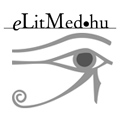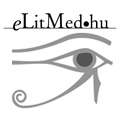The eLitMed.hu medical portal uses computer cookies for convenient operation. Detailed information can be found in the Cookie-policy.
Lege Artis Medicinae - 2003;13(07)
Content
[MOTOR VEHICLE ACCIDENT WITH COMPLETE LOSS OF CONSCIOUSNESS DUE TO VASOVAGAL SYNCOPE]
[INTRODUCTION - Vasovagal syncope is one of the most common causes of complete or partial loss of consciousness, thus it might cause harm to the patients themselves or innocent bystanders while driving a car. CASE REPORT - In our case report we introduce the case of a 60-year-old man who was admitted to hospital after a serious motor vehicle accident due to loss of consciousness. We demonstrate the process and results of complete cardiologic and neurological assessment. Our case report illustrates the importance of recognition of patients with a high risk for incapacitating symptoms due to vasodepressor type vaso vagal syncope and the use of head-up tilt-table test to determine the diagnosis and to guide combined management. CONCLUSION - As transient loss of consciousness during driving may cause potentially fatal accident, it has to be taken into consideration during decision making for issue of driving license in patients with vaso vagal syncope.]
[NEW MODALITIES IN THE TREATMENT OF CHRONIC VIRAL HEPATITIS C: PEGYLATED INTERFERONS]
[Interferon-α proved to be the most effective therapy of chronic hepatitis C. Its combination with ribavirin enhances the antiviral activity and this modality has become the therapeutic standard recommended worldwide during the past few years. Metaanalysis of the international studies revealed that only 12-19% of the patients became virus-free following a 48-week long course of α interferon monotherapy. The combination treatment with ribavirin for 48 weeks increased the proportion of sustained responders to 35-45%. The introduction of pegylated interferons resulted in significantly higher response rates. The new therapeutic possibilities are due to the modified pharmacokinetic characteristics of the drug by changing the size and the structure of the molecules. Multicentre studies investigating the clinical effectiveness of the 40 kD sized pegylated interferon α-2a as well as the 12 kD sized pegylated interferon α-2b in combination with ribavirin reported 56% and 54% response rate, respectively. However, there is significant heterogeneity in the results according to the type of drug administered and to the genotype of the hepatitis C virus, as well as in the basal viral level and the stage of hepatic fibrosis, respectively. The message and the conclusion of the viral kinetic studies are worth remembering: if the result of the HCV nucleic acid test is still positive at week 12 or 24, therapy should be ceased due to the patient non-responder status. Since pegylated interferons are also available in Hungary the authors felt useful to give an overview of the current knowledge, summarizing the results of the relevant studies and provide a suggested state-of-the-art therapeutic protocol based on international consensus.]
[AGRESSIVE STRATEGIES IN THE TREATMENT OF INFECTIVE ENDOCARDITIS]
[Without treatment, infective endocarditis (IE) is a fatal disease and in spite of contemporary diagnostic and therapeutic tools its prognosis is still poor. The most important first step is the early rise of clinical suspicion which should be confirmed by the new clinical criteria. Echocardiography is a major criterium: transesophageal echocardiography (TEE) is superior to transthoracic echocardiography (TTE) both in the diagnosis and in the detection of complications of infective endocarditis. Complications can be valvular (embolism, valvular dysfunction) or perivalvular (abscess, pseudoaneurysm formation) with hemodynamic consequences. TEE is recommended as the first line diagnostic technique (mostly in prosthetic valve infective endocarditis) or as a second study following negative TTE or positive TTE with high clinical risk factors or to define embolic risk. In addition to classical surgical indications, early ”preventive” indications are emphasized which can decrease the still high operative mortality. Improvement of outcome in infective endocarditis can only be expected with agressive management meaning early suspicion, early TEE and early operation.]
[OBESITY: THE EPIDEMIC OF OUR TIMES]
[The influence of changes in lifestyle on treatment and prevention of cardiovascular diseases are the objects of surveys in many places of the world. On the basis of clinical trials one can underline that the Mediterranean diet, with enhanced physical activity, changing lifestyle, cessation of smoking, reducing alcohol intake, maintaining normal weight can decrease dyslipidaemia, atherosclerosis and prevent cardiovascular diseases.]
[THE USE OF EARLY BIOMARKERS IN PREVENTION. - THE MARKERS OF THE EXPOSITION, EARLY EFFECT AND INDIVIDUAL SENSITIVITY]
[The molecular and predictive epidemiology plays more and more important role in the prevention of cancer. With the help of early biomarkers, high risk population could be identified for primary preventive intervention modalities. It uses both molecular biological methods and elements of risk assessment plus a testing system based on animal experiments. Its specificity is not high enough to establish the diagnosis but it can be used to monitor the disease and to follow the effectivity of the therapy (e.g. "minimal residual disease") and the preventive interventions. It is also suitable for risk assessment with the markers of individual susceptibility. As to everyday practice there are many problems because of limited therapeutic possibilities, but we hope that the molecular and predictive epidemiology becomes an important part of medicine in the near future.]
[DIAGNOSTIC PROCEDURES AND SUCCESSFUL TREATMENT OF A RARE INTRAABDOMINAL NEOPLASM IN AN UNCOMMON LOCALISATION]
[INTRODUCTION - Primary neoplasms of the grater omentum are rarely revealed. The primitive neuroectodermal tumor of the grater omentum is extremely rare, only one case has been reported in the English literature. CASE REPORT - We report a case of an omental tumour occurring in a 50-year-old man with HBV-positive liver cirrhosis (Child C). The patient had regular check-ups in our outpatient clinic. One of the regular ultrasound scans revealed an epigastrial space-occupying lesion, which was not seen previously. The symptoms and the laboratory tests did not suggest an intraabdominal malignancy. Abdominal CT scan did not raise the suspicion of a neoplastic lesion either. Some weeks later a sudden increase in the amount of ascites has developed. A repeated abdominal ultrasound scan detected the tumour again. The reassessment of the CT scan provided some suspicion of the presence of an abdominal neoplasm. After draining the ascitic fluid by paracentesis an apple-sized nodule was palpable. Abdominal US-guided biopsy was performed. On histopathological examination the diagnosis of a primary peritoneal neuroectodermal tumour was made. Laparotomy proved the precise location but the tumorous conglomeration could not be removed as a whole. Following surgery the patient was treated in the oncology department and a significant improvement could be achieved. CONCLUSION - This case highlights the importance of the correlation of the clinical data and imaging techniques and the necessity of regular patient follow-up.]
1.
Clinical Neuroscience
[Headache registry in Szeged: Experiences regarding to migraine patients]2.
Clinical Neuroscience
[The new target population of stroke awareness campaign: Kindergarten students ]3.
Clinical Neuroscience
Is there any difference in mortality rates of atrial fibrillation detected before or after ischemic stroke?4.
Clinical Neuroscience
Factors influencing the level of stigma in Parkinson’s disease in western Turkey5.
Clinical Neuroscience
[The effects of demographic and clinical factors on the severity of poststroke aphasia]1.
2.
Clinical Oncology
[Pancreatic cancer: ESMO Clinical Practice Guideline for diagnosis, treatment and follow-up]3.
Clinical Oncology
[Pharmacovigilance landscape – Lessons from the past and opportunities for future]4.
5.
















